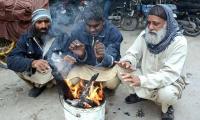The other day in Mexico, I fell into conversation with an older gentleman from Virginia who had recently lost a brother to cancer. Choking up as he recalled how, as a child, his brother would approach parents on the street to compliment them on the beauty of their offspring, the gentleman added that cancer had not been his brother’s only affliction. He had also, he said, been a victim of ‘the other epidemic’ – meaning the opioid crisis that caused some 500,000 overdose deaths in the United States between 1999 and 2019, while destroying countless more lives through addiction.
The coronavirus pandemic has only exacerbated the overdose phenomenon, with deaths in the US now surpassing 100,000 per year. Approximately 75 percent of these are attributed to opioids – a class of drugs that includes heroin, synthetic fentanyl, and prescription painkillers like oxycodone. A December op-ed in the New York Times, titled ‘Opioids Feel Like Love. That’s Why They’re Deadly in Tough Times’, explains that such drugs “mimic the neurotransmitters that are responsible for making social connection comforting – tying parent to child, lover to beloved”.
The article emphasises that isolation and loneliness often fuel addiction, and that a quadrupling of overdose death rates in the US over the past several decades has occurred in tandem with an increase in social isolation. A 2018 survey, for example, “found that only about half of participants felt that they had someone to turn to all or most of the time”.
It is hardly surprising, then, that coronavirus stay-at-home protocols and social distancing measures would prompt many Americans to seek substitutes for human contact and affection – not that US society was ever very, um, loving.
To be sure, life can get pretty lonely in a country that prefers to spend trillions on war rather than ensuring that its citizens have adequate access to basic rights like healthcare – and where a depraved capitalist system actively thwarts inter-human solidarity in the interest of maintaining a tyranny of the elite.
Speaking of war, the figure of half a million – the number of Americans killed by opioid overdoses over two decades – happens to be the same as the number of Iraqi children reportedly killed by US sanctions alone as of 1996. When confronted with this statistic at the time, then-US Ambassador to the United Nations Madeleine Albright affirmed that “we think the price is worth it”, which pretty much perfectly encapsulates capitalism’s lethal logic.
So, too, does the case of Purdue Pharma – manufacturer of the massively addictive prescription painkiller OxyContin – owned by the billionaire Sackler family. As was noted in a December 2020 US congressional hearing on the role of Purdue and the Sacklers in the opioid epidemic, “Purdue targeted high-volume prescribers to boost sales of OxyContin, ignored and worked around safeguards intended to reduce prescription opioid misuse, and promoted false narratives about their products to steer patients away from safer alternatives and deflect blame toward people struggling with addiction”.
Excerpted: ‘The US opioid epidemic, edition 2021’
Courtesy: Aljazeera.com
There are over 11 million Pakistanis settled abroad, out of which around six million work in Gulf and Middle East
This year alone, US Treasury would have to roll-over $10 to $14 trillion in maturing short-term debt
Tear gas no longer marks just protest sites; it paints entire cities as battlegrounds but then again, PTI did it first
Political structures and governance systems have been central to economic and social development
It is confirmed now 40 Pakistanis had died after boat of migrants had capsized in sea near Greece
Many people believe that in future, AI will play an even more significant role in their lives







